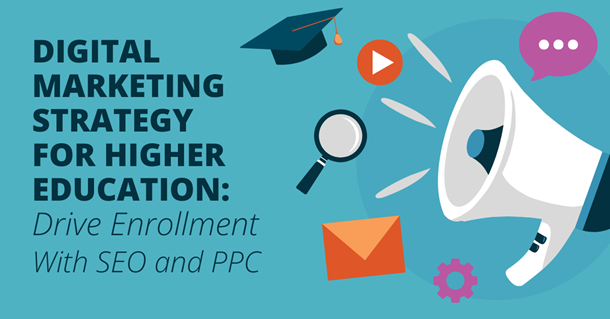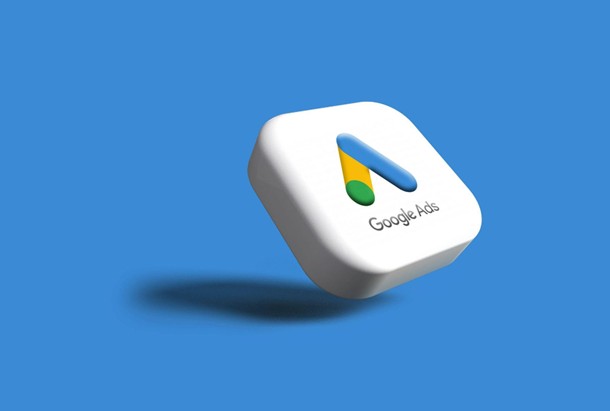Industry Insights
Valuable insights from UPCEA's trusted corporate partners.
Digital Marketing Strategy for Higher Education: Drive Enrollment With SEO and PPC
Summary
Siloed marketing limits results. Learn how to build a full-funnel digital marketing strategy for higher education using SEO and paid ads with Search Influence.
How Do You Market to College Students Today?

What is the modern student search journey?
Today’s students explore school options across various platforms, often following curiosity rather than a set path. Before they even land on a college website, students might watch a dorm tour on TikTok, get advice from Reddit threads, or ask ChatGPT to compare programs.
AI-generated summaries and social content now shape decisions earlier, often replacing traditional search result clicks. Discovery is impression-driven and fluid, with students forming opinions across channels and over time, not in a single session.
As a result, relying solely on organic rankings or time-bound ad campaigns leaves gaps in how and when prospective students engage with your school.
Why this matters for enrollment marketers
Students won’t seriously consider your institution if it doesn’t show up consistently across the platforms they regularly use. As search behaviors shift toward AI tools and social media, colleges that rely on disconnected or outdated SEO tactics risk being overlooked entirely.
To stay visible and attract prospective students, educational institutions must build integrated campaigns that reach users before, during, and after the search engine results pages (SERPs).
This means showing up with helpful, relevant content in TikTok feeds, Perplexity answers, YouTube sidebars, and search engine results, while keeping messaging consistent and aligned with your brand.
Your digital marketing efforts also need to match the platform. What works on a program page doesn’t always translate well to short-form video content or a four-sequence email marketing campaign. Students expect each interaction to feel platform-native, personalized, and credible.
That’s why a full-funnel strategy is essential. It helps your team create platform-specific content that works together to nurture interest, build trust, and guide students through the decision-making process.
SEO — The Long Game for Brand Visibility

How do universities market themselves with SEO?
Universities use SEO to get discovered by potential students who are actively researching programs, careers, and colleges. By creating semantically rich, AI search-optimized content around high-intent keywords, schools increase their visibility in both traditional search results and AI summaries.
Effective SEO helps your institution appear when students search for degree options, compare majors, explore campus life, or ask ChatGPT for school recommendations. It builds trust, reinforces brand authority, and drives organic traffic that doesn’t rely on ad spend.
In addition, SEO supports the entire enrollment funnel:
- Top of funnel: Career guides and blog content attract new audiences
- Middle of funnel: Program pages, admissions process pages, and FAQs help students evaluate options
- Bottom of funnel: Branded search results and student testimonials build confidence before they apply
When your content is built to answer questions across platforms, your school stays visible, wherever students start their college search.
What makes a successful SEO strategy for higher education?
A successful SEO strategy in higher education focuses on site quality, structure, and credibility to help your content rank well in traditional search engines and AI-generated responses. It’s not just about keywords anymore. AI search prioritizes context, entities, and clear answers to real student questions.
To effectively compete, your SEO strategy must include:
- Technical SEO: Fast-loading pages, mobile-friendly layouts, and schema markup to improve visibility across platforms
- On-page SEO: Clear headings, logical topic structure, and strong calls to action to guide both users and search engines
- Content strategy: Informative, semantically rich content to address what students are asking, like how to choose a major or apply for aid
- Authority signals: Faculty bios, expert quotes, and citations to establish trust and improve your chances of appearing in AI-generated summaries. These align with the Google E-E-A-T criteria.
Search engines and AI tools are increasingly entity-driven, meaning your content must be precise, contextual, and structured to support human readers and machine interpretation. When your SEO checks these boxes, your institution is more likely to show up across traditional and AI search.
Paid Ads — Capturing Immediate Demand

Why are paid ads important in a digital marketing strategy for higher education?
Paid, or PPC ads, keep your institution visible at key decision points, especially as AI Overviews reduce space for organic links.
Together, paid search and paid social support every stage of the enrollment funnel. When aligned with SEO, they help your institution capture demand in real time and stay top of mind from discovery to decision.
Paid search ensures your school appears for high-intent Google queries, such as searches for application deadlines, program details, and scholarships. Paid social extends your reach on platforms like Instagram, TikTok, and YouTube, where students spend time and form early impressions.
With targeting based on interest, online behavior, location, and demographics, digital ads drive traffic to critical pages like applications, visit schedulers, and program inquiries. They also build brand familiarity and retarget prospective students who haven’t yet inquired or applied.
What does an effective paid ads strategy look like for colleges?
An effective paid ads strategy in higher education is built around the student decision journey — improving visibility, increasing inquiries, and supporting enrollment goals through timely, relevant engagement. By aligning campaigns with the enrollment funnel and optimizing continuously, colleges can drive measurable results at every stage.
Instead of casting a wide net, top-performing campaigns focus on program-specific interests and behaviors. Ads are structured to meet three primary objectives: build awareness, generate leads, and convert applications.
Key components include:
- Funnel-based segmentation: Separate campaigns for awareness, inquiry, and application stages
- Audience targeting: Keywords and behaviors tied to specific programs or career outcomes
- Platform diversification: Visibility across Google, YouTube, TikTok, Instagram, and discovery-based placements
- Retargeting: Re-engaging students who viewed degree pages but didn’t convert
- Landing page alignment: Driving clicks to program-relevant, action-focused pages
- Optimization: A/B testing creative, refining bids, and using performance data to improve results
- Message consistency: Reinforcing SEO and AI-generated visibility with platform-native messaging
Why SEO + Paid Ads Work Better Together in Higher Education
Should higher ed marketers use SEO and paid ads together?
Yes, using organic and paid search together in higher education creates a more powerful and flexible strategy than relying on either channel alone. This multi-channel approach helps your institution stay visible at every stage of the student decision journey, maximizing your presence across search, social, and AI-driven platforms.
While SEO builds long-term visibility and trust, paid ads offer guaranteed placement when organic reach is limited, especially in AI Overviews and competitive search environments. Occupying organic and paid real estate reinforces credibility and increases the chance your content gets seen and clicked.
Working together, these digital channels also inform and strengthen one another:
- SEO insights (like keyword data and on-site behavior) can improve paid ad targeting and messaging
- PPC data (like click-through and conversion rates) can help prioritize SEO content that drives action
- Shared funnel strategy ensures consistent messaging and smarter audience segmentation
As AI changes how students search, combining SEO and paid ads gives you both adaptability and coverage. You stay eligible for organic discovery while guaranteeing visibility during the highest-intent searches.
Build a Full-Funnel Marketing Strategy That Drives Enrollment
How do you develop a marketing strategy for a university?
A successful university marketing strategy unites SEO and paid ads into one coordinated approach, building long-term visibility, responding to short-term demand, and guiding students from exploration to enrollment. It starts with understanding how prospective students search, think, and act across traditional and AI-driven platforms.
Your strategy should reflect real student behavior from first curiosity to final application. Map the journey across search, social media, and tools like ChatGPT and Google AI Overviews. Identify your audience’s questions, the platforms they use, and the moments that influence their decisions.
Then align your SEO, digital advertising, and content strategy to meet those moments with clear, platform-native messaging.
- Effective marketing strategies prioritize:
- Student intent over impressions
- Full-funnel cohesion over channel silos
- Adaptability as platforms and algorithms evolve
Adapting Your Strategy to AI and Social Search
How AI search is reshaping college discovery
AI tools like Google AI Overviews and Gemini are changing how students discover colleges, often delivering answers before users turn into site visitors. This shift is reducing click-through rates and impacting organic visibility in higher education digital marketing.
To stay competitive, your SEO content must be structured, context-rich, and designed to answer student questions clearly to be eligible for summarization. Entity optimization and semantically meaningful copy also increase your chances of surfacing in AI-generated results.
Still, even strong organic content can be bypassed. Paid ads provide a crucial safety net when AI suppresses or summarizes links, ensuring your institution appears in key decision moments.
Adapting to AI search is no longer optional. It’s the new baseline. Schools that integrate AI search and SEO best practices will be better positioned to reach students where discovery now happens.
Why social search now matters as much as Google
Social media platforms play a central role in how prospective students discover and evaluate colleges. Students increasingly use TikTok, YouTube, and Instagram as search engines, looking for virtual campus tours, student success stories, and day-in-the-life content, just as they would on Google.
Your content must be optimized for social search to remain relevant. That means using natural language, platform-relevant hashtags, short-form videos, user-generated content, and clear, engaging descriptions that align with how students search and consume information.
Paid social campaigns further extend your reach. They boost brand visibility, support retargeting, and help reinforce your message across multiple touchpoints.
As behavior shifts, schools that prioritize social search as part of their SEO and paid strategy (not just as a separate effort) will be more likely to connect with students early and often.
Rethink Your Enrollment Strategy: Start With the Right Digital Foundation
Today’s prospective students navigate multiple channels quickly and expect personalized, relevant, and engaging content at every step. To keep up, your marketing strategy must be as connected and responsive as their search behavior.
A siloed approach won’t cut it. Your SEO and paid advertising must work together to create a seamless experience that builds awareness, captures interest, and drives action across the entire decision journey.
At Search Influence, we help higher education institutions strengthen their enrollment marketing by aligning sustainable SEO growth with performance-driven paid campaigns. Together, these strategies ensure your school stays visible, credible, and competitive, no matter how higher ed marketing trends evolve.
See how your higher education marketing efforts stack up
Ready to evaluate your current digital marketing strategy for higher education?
Download our Self-Assessment White Paper: 7 Strategies to Create a Successful Education Marketing Campaign. You’ll learn how to flip your marketing funnel by viewing it from the student’s perspective and applying seven proven tactics to reach and convert more qualified prospects.
Set your institution up for success in the next era of student search today.
Alison Zeringue is the Director of Account Management at Search Influence, a leading digital marketing agency specializing in higher education. With over 15 years of experience delivering white-glove client service and ROI through forward-thinking marketing strategies, Alison has a proven track record of helping institutions, including Tulane School of Professional Advancement, effectively reach and engage their target audiences.
